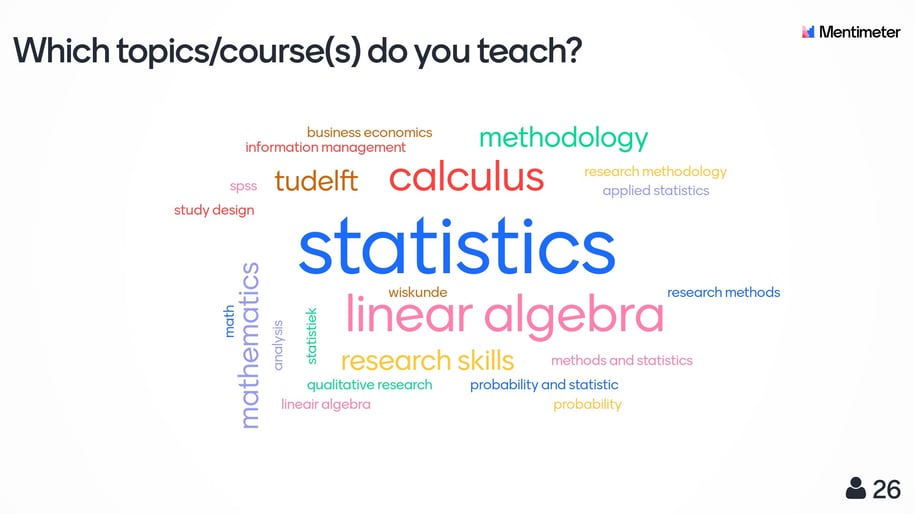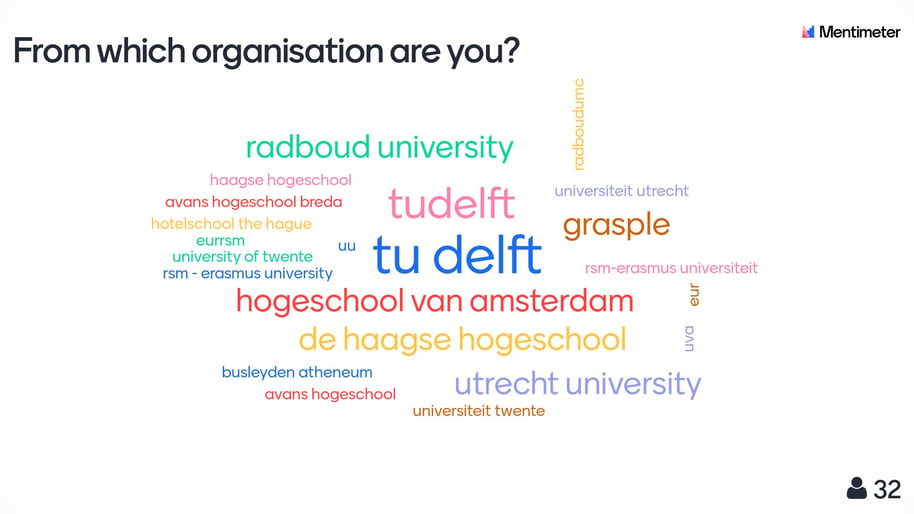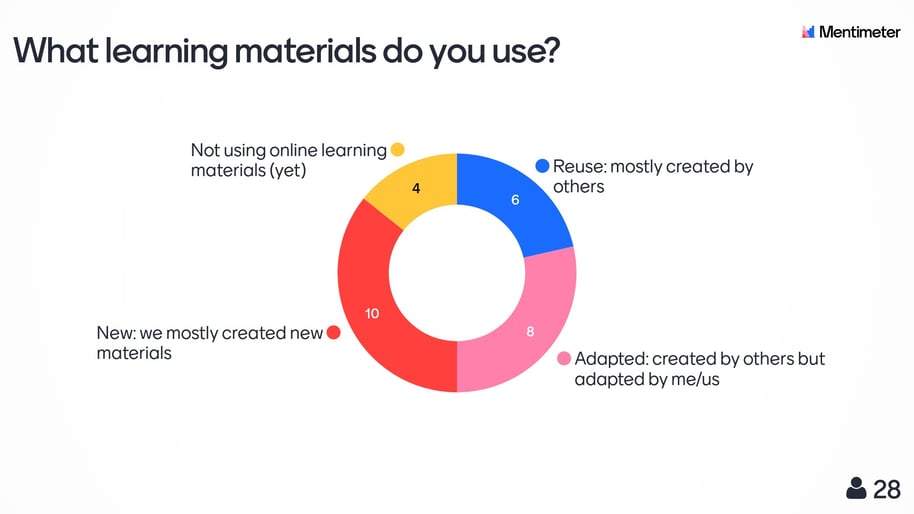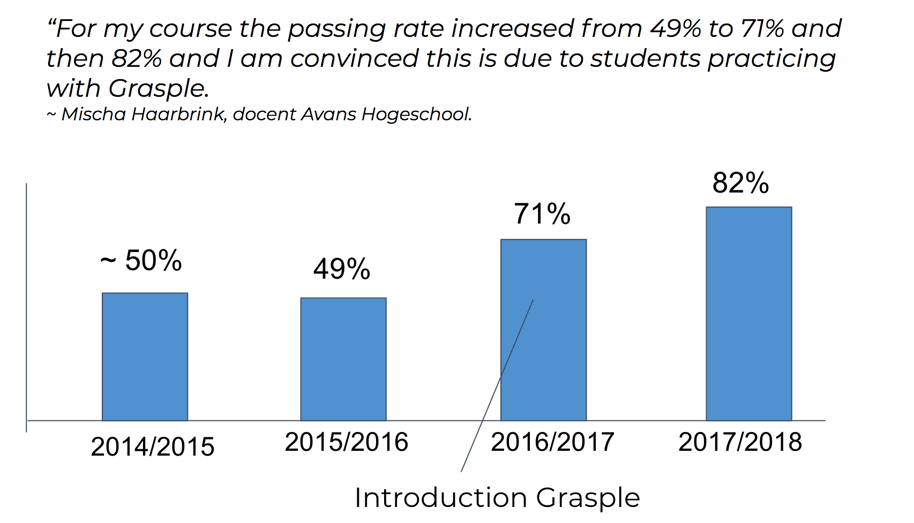Grasple Teacher Day May 2020
Exchanging experiences on activating students, sharing practice materials and remote summative testing.

by Ellen Hoefsloot
Project Manager at Grasple
On May 7th 2020, Grasple organised its second Teacher Day. It’s an event where teachers share their experiences related to online practice and assessment. This time it was held fully online, due to covid-19. With over forty participants and six speakers from many different universities, universities of applied sciences, and secondary education, it was a well-attended event to highlight the experiences and useful lessons from educators in the field.
View the recording of the event below.



Answers to questions
It was great to see much interaction between the participants. Everyone could ask questions in the chat and this opportunity was used. The chat quickly filled up with good questions.
Below you can find answers to some of the questions that were raised during the event. Please note that some of the questions can only be answered by the speakers. We’re following up with them and new answers will continuously be added below.
Q: Johannes, do you also use other exercises from the textbook?
A: We do use other exercises, namely cases and assignments that are graded. But all are tightly controlled to make sure everything fits together.
Q: What do your exercises look like, Johannes?
A: The exercises in Grasple are quick and constructed in such a way that students don’t need additional materials, such as a calculator, but that they could also do them while in the bus for example. They are a mix of open questions and multiple choice, where students have indicated whether they agree or disagree with several statements for example.
Q: How are those notifications that Johannes mentioned broadcasted?
A: using our LMS (Canvas).
Q: When others would like to reuse materials you (or another educator) created, what should they pay attention to?
A: The only thing I would pay attention to is that your other course materials align well your Grasple material, regarding wording, types of examples, etc.
Q: How do you monitor quality when adding open source items to Grasple?
A: Marleen from the ShareStats project: We will develop and use a quality model to assess the quality of the items, and decide which items will enter into the open databank. Once the databank is there, it is possible to add items. A panel of methods teachers from the community will judge the quality of the items using the same quality model. This ensures that all items in the open databank are of high quality, and they can be imported into Grasple for further use in education.
Q: Students seem to appreciate Grasple a lot, that is great. But did someone measure the effectiveness? Are students using grasple getting better at it vs. students not using grasple?
A: This is a good question, but one that cannot be answered briefly. The first thing to consider is: how do we measure ‘getting better’? and compared to what? not doing anything or reading from a book? There are some indications - as shown in the figure below - that Grasple might be quite effective in increasing students’ grades, with the underlying theory that the more students practice (at the right level), the better they will master the subjects and pass the exams.

However, we are very cautious and hesitant to use this to draw broad claims, as those claims can only be stated with confidence when based on randomised control trials. (correlation does not imply causation. Read more about this and other points of caution in our article ‘data disclaimers’) So far, Grasple has not been studied in a randomised control trial. Currently there are several researchers that are exploring data from and about Grasple. When these researchers post their findings, we will of course share them so that we can collectively draw evidence-based insights into the effects and effectiveness of educational tools like Grasple.
How do you manage the integration of Grasple exercises with the lectures when your exercises are used in other courses (where you are not the lecturer)? Any other tips?
Q: Are video’s (short lessons) also included in some grasple courses to explain bits of theory to the students? I am very curious to see some examples of mini lectures in Grasple
A: Kirsten: Yes, videos and knowledge clips are a great way to explain theory and include in a Grasple lesson. A video can also be used to show an example from the field, followed by questions how the theory applies to the example. Cathy: I use it at a high school for physics
Q: Very interesting to hear indeed that Grasple is being used for other courses. Presumably this works best for any material which is being assessed by closed/multiple-choice type questions, right? Put differently: would grasple also be suitable for courses which are about projects/discussions/less predetermined answers?
A: Kirsten: Grasple is most suitable for MC questions, numerical questions, or questions that can be answered with a short answer (think of naming a color, to which the answer “yellow” is the correct answer, or naming a type of validity, to which “external” is the right answer). We have used it for other things as well, but you will have to get creative. Students can do lab work, and in the question you ask about 1 aspect of the lab results. Later on in the lesson (maybe at the very end or in an exercise) you can present the full results. We guide students through reading scientific articles using Grasple lessons. Sometimes we rewrote the questions to fit the Grasple format, but sometimes the students are asked to write a paragraph to explain how or why something happens. We then ask the students to type this up in a Word document and we give them pointers/our short version at the end of the lesson or we ask them in exercises at the end if they thought to include this or that argument. In the feedback we then include our version. All in all, if you get creative, Grasple can be used for almost anything!
Q: How many exam questions do you plan to create per topic/exam?
A: Fokko and Iris - Goal is 5 questions/pool (if properly parametrized). Exam is 1.5 hours; this determines the number of questions.
Q: UTwente mentioned in their presentation that 50-50 [between automatically graded and fully open questions] is a good balance. Why is that?
A: During the first pilot of Calculus 2, we could compare grading fully written out questions to only grading the final answer. This grading of final answer could occur with 66% of the questions. However, factors such as student acceptance (results from surveys) and the time needed to create novel final answer questions, and concerns if all learning goals were truly being tested with only 34% open questions, the decision was to make the final answer/MCQ section only 50% of the exam.
Q: At UTwente, suppose you want to give questions consisting of several steps. Have you experimented with giving partial solutions which students can then use to do the next steps? What are the pro’s/con’s?
A: We have not experimented with this, as breaking up a problem still causes the student to be given more information than they would get, than if they were faced with a problem (on paper) and had to do everything themselves. Experimenting with first checking if a student can autonomously get to this answer himself, and then giving hints/partial solutions is indeed something we will be experimenting with in the future using decisions trees.
Q: To UTwente, regarding the “check your answer” point - what kind of concrete hints/instructions do you provide? Could you give some examples of questions & hints?
A: During the lectures, lecturers often demonstrate how they check their answer. This sometimes is referred to as ‘debugging’ the answer. Additionally, past exams are published with with verbal instruction about how the answer can be checked in that question. So it is a combination of upfront demonstration on how to check their answer, as well as repeating it in tutorials/self-studies, and have an online documents, this develops as a critical thinking habit for students. Some examples could be when solving coefficients in a polynomial, substitute the points into the polynomial to make sure they satisfy the equation. When solving for eigenvalues, check to see if the eigenvalue given in the question is still included! Or when you are asked to normalise a vector, you can check if it has a length of 1, if the sum of the squares of the vector components equal to 1.
Do you want to be part of this online community of teachers in higher education?
We e-mail once a month. We promise we value your inbox, so no spam.




